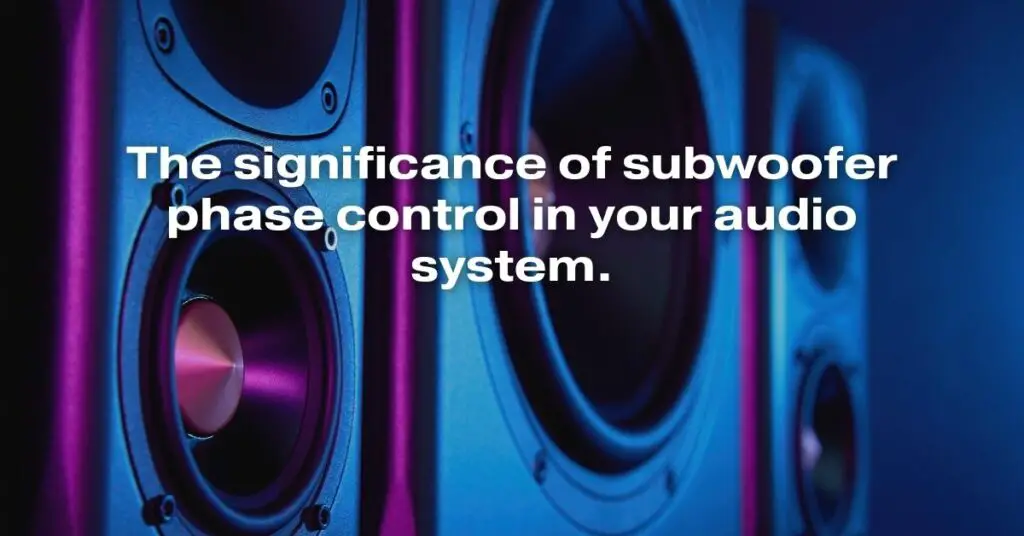In the realm of audio reproduction, achieving a seamless and cohesive soundstage is paramount for an immersive listening experience. A crucial component in this pursuit is the proper integration of a subwoofer, the dedicated speaker responsible for reproducing the low-frequency range, or bass, of the audio spectrum. While subwoofer placement and crossover settings play a significant role in achieving optimal bass performance, the often overlooked aspect of subwoofer phase control holds immense importance in ensuring a harmonious blend between the subwoofer and the main speakers.
Phase, in the context of audio, refers to the timing relationship between two or more sound waves. When sound waves are in phase, their peaks and troughs align, resulting in a reinforcement of the overall sound. Conversely, when sound waves are out of phase, their peaks and troughs counteract each other, leading to a cancellation or reduction in sound.
In a multi-speaker audio system, proper phase alignment is essential for achieving a smooth and balanced sound. This is particularly critical for the integration of a subwoofer, as its low-frequency output can easily interfere with the bass frequencies produced by the main speakers if their phase relationship is not aligned.
Subwoofer phase control, typically found as a switch or knob on the subwoofer itself, allows the user to adjust the timing of the subwoofer’s output relative to the main speakers. By adjusting the phase control, one can ensure that the subwoofer’s bass output is in sync with the main speakers, resulting in a cohesive and impactful low-frequency reproduction.
The impact of subwoofer phase control is most evident in the mid-bass region, where the subwoofer’s output overlaps with the lower frequencies produced by the main speakers. When the subwoofer is in phase with the main speakers, the bass frequencies blend seamlessly, creating a full and extended low-end response. However, if the subwoofer is out of phase, the bass frequencies can cancel each other out, resulting in a thin and underwhelming bass reproduction.
The correct phase setting for a subwoofer depends on several factors, including the placement of the subwoofer relative to the main speakers, the room acoustics, and the crossover settings. In general, the 0-degree phase setting is considered the default, but experimentation with the 180-degree setting may be necessary to achieve optimal results in certain setups.
To determine the ideal phase setting for your subwoofer, it is recommended to conduct a simple listening test. Play a bass-heavy track and toggle between the 0-degree and 180-degree phase settings while paying close attention to the overall bass response. The setting that produces a fuller, more impactful bass without any noticeable dips or cancellations is the correct phase setting for your system.
In conclusion, subwoofer phase control plays a significant role in achieving a seamless and cohesive soundstage in a multi-speaker audio system. By ensuring that the subwoofer’s output is in phase with the main speakers, one can optimize the bass reproduction, resulting in a more immersive and enjoyable listening experience. Proper phase alignment is crucial for maximizing the performance of a subwoofer and achieving the full potential of your audio system.

